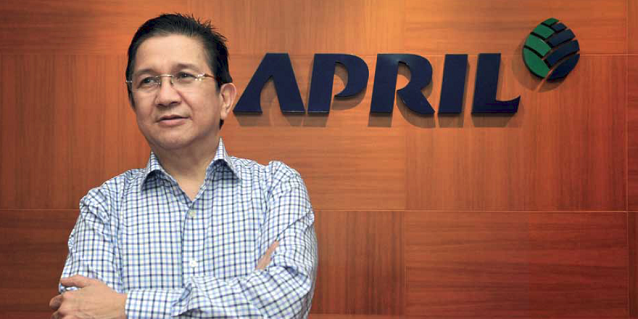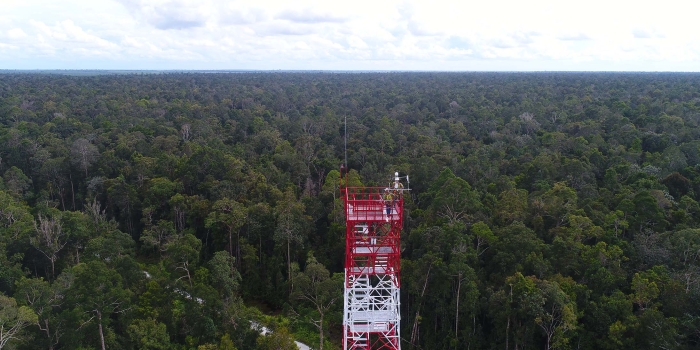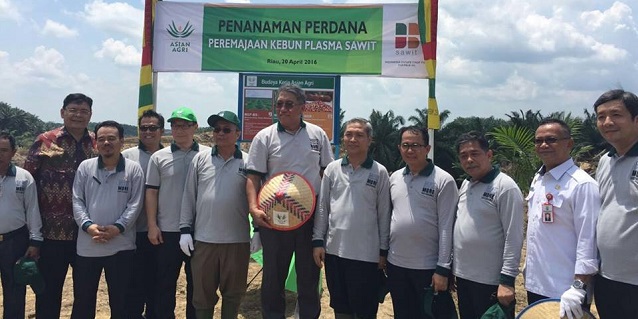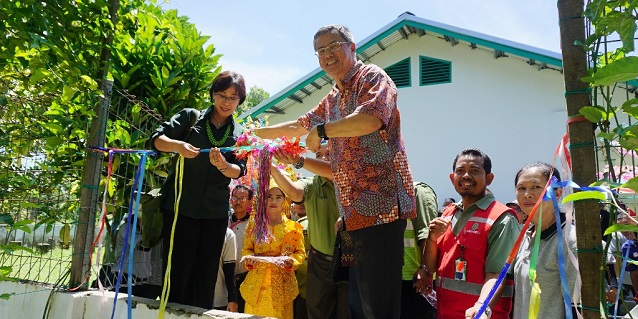Mr Tony Wenas, Director APRIL Group Indonesia Operations and President Director PT RAPP, was recently interviewed by GlobeAsia. The article and feature image are shared with permission from GlobeAsia. Links and images have been added.
Indonesia’s large forestry sector has been a major driver of economic growth over the past few decades. But in recent years the sector has come under heavy criticism from environmental groups for unsustainable practices. As one of the largest pulp and paper companies in the world, RAPP is striving to strike the right balance between economic growth and conservation.
By Shoeb Kagda
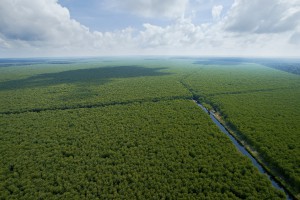 In times of economic slowdown or turmoil, most companies preserve their resources and hunker down, waiting for the uptick in growth. And if the company operates in the natural resource space, it probably will be more conservative than most.
In times of economic slowdown or turmoil, most companies preserve their resources and hunker down, waiting for the uptick in growth. And if the company operates in the natural resource space, it probably will be more conservative than most.
But Tony Wenas, president director of PT Riau Andalan Pulp & Paper (RAPP), a subsidiary of Asia Pacific Resource International (APRIL), thinks differently. In an interview with GlobeAsia, the veteran businessman said that in fact now is the time for companies to invest for future growth.
His rationale is simple. Commodity prices, which have been depressed for some time, will turn. The paper and pulp industry is likely to expand by 2.5% to 3% annually as new demand comes on to the market.
“We all know that Indonesia’s economy will grow between 4.7% to 4.8% in 2016, which is lower than in previous years,” he noted. “But our way of thinking is that 2015 and 2016 are the time to invest in Indonesia as fuel costs are a lot lower and subsequently production costs have also fallen.”
True to his word, RAPP last July invested in a new Rp4-trillion ($300-million) paper mill for its sprawling Kerinci facility and the company is now planning for a $1-billion rayon plant where construction will begin this year.
The new paper mill will add 250,000 tons to the company’s current 850,000-ton paper production capacity while the rayon plant will enable the company to produce higher-grade digital paper.
“In our case we think this is the right time to invest so we are not expanding our footprint but going further downstream,” Wenas said. “Demand for high-grade digital paper is rising primarily because it uses between 20% to 30% less ink and ink is expensive.”
And as for the pulp sector, while demand for paper is falling, demand for packaging, especially from China, is rising. “Tissue demand is also rising as new uses are developed such as hospitals using tissue for bedsheets instead of cloth.”
These trends bode well for the pulp and paper sector over the long term. The key, said Wenas, is for the company to continue to innovate and invest, even during times of economic slowdown.
“If we can process by creating downstream industries, you get higher returns. It’s economic sense and it applies to all sectors, including mining,” he noted. “But it is not easy to do (in mining) as the returns can take longer to be realized.”
One way by which larger players can offset the huge investments in downstream processing is by collaborating with smallholders. Such collaboration is already underway in the palm oil sector and could extend to mining and other natural resource sectors.
Sustainable journey
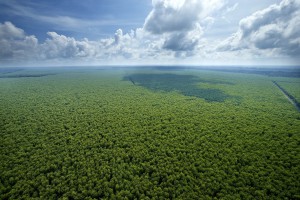 The recent forest fires in Sumatra and Kalimantan which generated choking haze across the region once again focused global attention on Indonesia’s forestry sector. While most of the blame was placed on palm oil plantation companies and smallholders who cleared land by burning, RAPP has not been remiss in adopting sustainable practices.
The recent forest fires in Sumatra and Kalimantan which generated choking haze across the region once again focused global attention on Indonesia’s forestry sector. While most of the blame was placed on palm oil plantation companies and smallholders who cleared land by burning, RAPP has not been remiss in adopting sustainable practices.
The company started its sustainable journey in early 2000 when it introduced certification for the trees it cut for pulp production. Then in 2005, it began its high-conservation-value program which resulted in 250,000 hectares being conserved within its concession area in Riau.
“This year (2015) we announced our sustainable forestry management policy 2.0 which is a 1.1 commitment to conserve,” Wenas noted. “If we plant one hectare, we conserve one hectare and so far APRIL has planted 850,000 hectares.”
During the recent Climate Change conference in Paris, the company committed to conserving another 80,000 hectares on top of the 70,000 hectares it has set aside under its ecorestoration program.
“We have a total of 400,000 hectares under restoration and conservation at the moment,” he added. “We are committed to spending $100 million for conservation over 10 years and that is not an easy commitment.
“Our policy has always been that whatever we do must be good for the country, good for the community and good for the company. Now we have inserted two more Cs, conservation and climate before company,” Wenas said.
RAPP is thus supporting the Indonesian government’s pledge to conserve the country’s remaining natural forests. The company has installed 250 cameras within its conservation areas and found tigers prowling the forests and has pledged no new developments in forested peat lands.
“We realize that investing in our business is important but it is also important to invest in social and environmental projects as well,” he said. “That is how we can be sustainable.”
RAPP’s journey towards more sustainable operations has not always been smooth. The company in the past came under severe criticism from environmental groups for cutting down natural forests for its pulp but over the past few years it has worked had to improve its sustainability record.
“The haze was a PR and environmental disaster for Indonesia,” Wenas said. “We are always being dragged into it.” According to RAPP’s internal study, most of the burning was caused by arson so providing people with alternatives is critical.
The company has launched its fire-free village program as a response to the annual haze problem where it rewards villages with Rp100 million in assistance if they keep their area fire-free. “We also help villages to open areas for planting as long as it is not a forested area.”
Challenges ahead
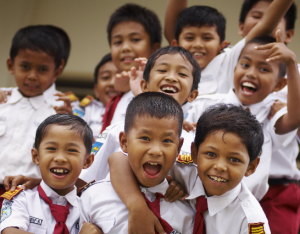 Despite the pressures from climate change, conservation, global economic uncertainty and local community issues, Wenas noted that the forestry sector was a critical contributor to Indonesia’s economic growth and poverty alleviation goals.
Despite the pressures from climate change, conservation, global economic uncertainty and local community issues, Wenas noted that the forestry sector was a critical contributor to Indonesia’s economic growth and poverty alleviation goals.
“Operationally, the main challenge is to improve productivity of our trees, to be more productive per hectare because we cannot expand our footprint much more,” he noted. “We must also invest more in downstream processing so we can derive higher value from our business.”
Non-operationally, the biggest challenge for RAPP is showing the business and environmental community that the company can manage its land and provide economic benefits to the local community as well as to the country.
Its operations in Riau provide 250,000 direct and indirect jobs while creating an additional 90,000 across Riau province. “This is a renewable resource, it can last forever if we manage it well and it can provide enormous benefit to the Indonesian people.”
Wenas is confident that 2016 will be a better year for Indonesia’s economy with greater political stability. The challenge for the government, he noted, is to balance environmental protection with economic growth and job creation. That challenge is not insurmountable, he stated.



